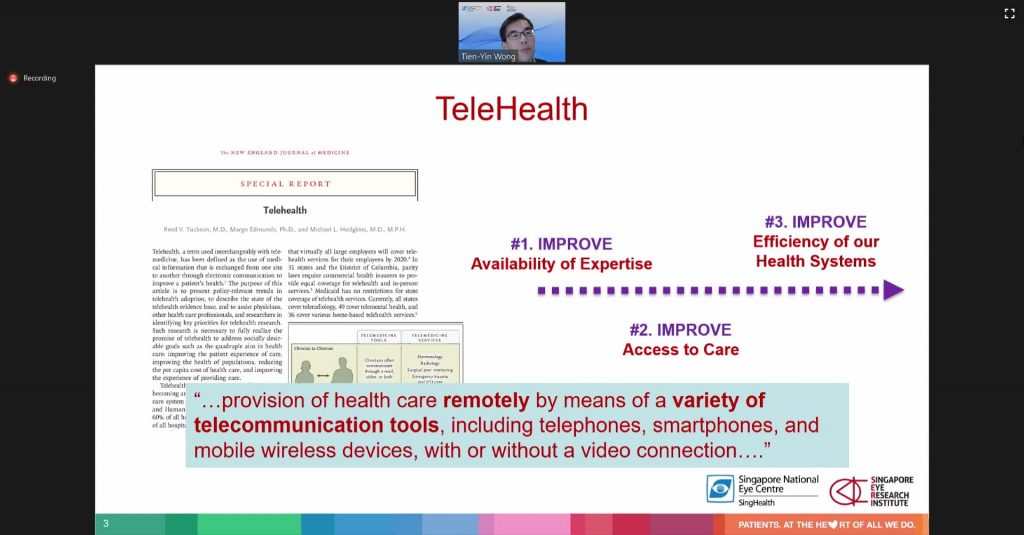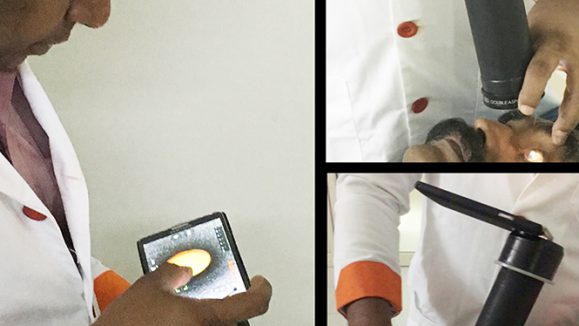- The Asia Pacific TeleOphthalmology Society has launched a new seminar on telemedicine in ophthalmology.
- The seminar will be held twice a month and is scheduled to bring together ophthalmologists from around the world.
- The first seminar focused on the importance of adapting to the new coronavirus normal and the growing importance of telemedicine.
Ophthalmology has a new webinar series to keep our intellectual whistles whetted. On Friday, June 12, the Asia Pacific TeleOphthalmology Society (APTOS) launched its first webinar seminar on telemedicine. Gathering a wide array of ophthalmologists from around the world the webinar was detailed and concise.
The APTOS seminar: Telemedicine and COVID-19 was only one hour long. However, it managed to pack in oodles of information and shared experience of telemedicine in ophthalmology. The webinar was introduced by Dr. Alarcos Cieza, World Health Organization (WHO) coordinator for blindness and deafness prevention, disability and rehabilitation, who emphasized the importance of ensuring patients are able to access care again after the coronavirus crisis abates.
Primarily a lecture by Professor Tien-Yin Wong (medical director of the Singapore National Eye Centre) the webinar also included open discussion and contribution by attendee ophthalmologists. Prof. Wong is a specialist in medical retina and has a research focus on diabetic retinopathy. He pointed to previous efforts to utilize telemedicine in this field as being prescient for the coronavirus crisis.
Ophthalmology Needs to Plan for a New Normal

Prof. Wong believes that ophthalmological telemedicine must be governed by the ‘three improves’: improving availability of expertise, improving access to care, and improving the efficiency of health systems. The best testing grounds for the ‘three improves’ policy are very densely populated countries like Singapore.
Sharing screenshots of patients in clinics pre-coronavirus, during the lockdown and now, Prof. Wong drew the viewers’ attention to how clinics can plan to reopen in the last six months of this year. Clearly, due to social distancing guidelines the old rules cannot apply. The professor argues a new normal will need to be accepted in ophthalmology.
He lists the following key considerations in this new normal that apply to all ophthalmology businesses and practices;
- Patient and staff safety – Concern about elderly patients with comorbidities and difficulty in screening asymptomatic cases.
- Infrastructure – New safe distancing norms in clinics and infection control measures.
- Business impact – Increased operational costs and reduced revenue. These are both immediate (surgery cancellations) and long-term (repeated lockdowns).
The parameters of this new normal mean that there will be fewer face to face visits and increased uptake of telemedicine. It will also cut time and touch points in clinics, and shift vision assessment and investigations towards the community. More staff will work from home, and tests and EMR will become increasingly digitized.
AI and VR Represent Major Opportunity for Ophthalmology
The webinar’s participants generally concurred that if telemedicine is to successfully enjoy widespread community uptake it requires an understanding of patient concern and technological innovation. Dr. Robert Chang of Stanford University pointed to the success of drive through testing centers as an example. In his view, ophthalmology should be looking for a balanced approach towards telemedicine.
This approach needs to look for a sweet spot. Ideally, this spot should sit at the nexus of ease of access and comfort of use. Dr. Chang believes patients want telemedicine solutions that provide quick answers therefore at home testing should be a priority, for which he is studying the application of VR technology.
The importance of embracing technological innovations like VR and AI in conjunction with telemedicine was also emphasized. Pointing to the Chinese word for crisis (comprised of the words for danger and opportunity), Prof. Wong says there is huge potential in AI. Despite, in his own words decades of disappointment in this field, telemedicine is synergistic with AI.
Coronavirus offers an opportunity to synchronize these technologies and create new, profitable models for patient care. Nearly 30% growth is expected in telemedicine in the U.S. alone over the next five years and according to Prof. Wong, AI will account for a significant share of this figure. Several of the webinar’s participants agreed, emphasizing new technology needs to be practical and profitable.
“It’s telemedicine, you have to make sure that someone is paying for it, nobody will do it for free, it’s so hard to maintain if it’s free,” said Dr. Ming He of the University of Melbourne. His comments sparked a response from Prof. Wong.
“People are always asking who’s going to pay for it and we need to think really carefully about this,” Prof. Wong said.
“People are willing to pay $30-40 for food delivery and for other online stuff. This is something all of us in ophthalmology should see as an inference as healthcare is now the foundation of the economy,” he added.
Editor’s Note: Launched on June 12, 2020, the Asia Pacific Tele-Ophthalmology Society (APTOS) Webinar Series will be made a recurrent event on the second Friday of every month.



